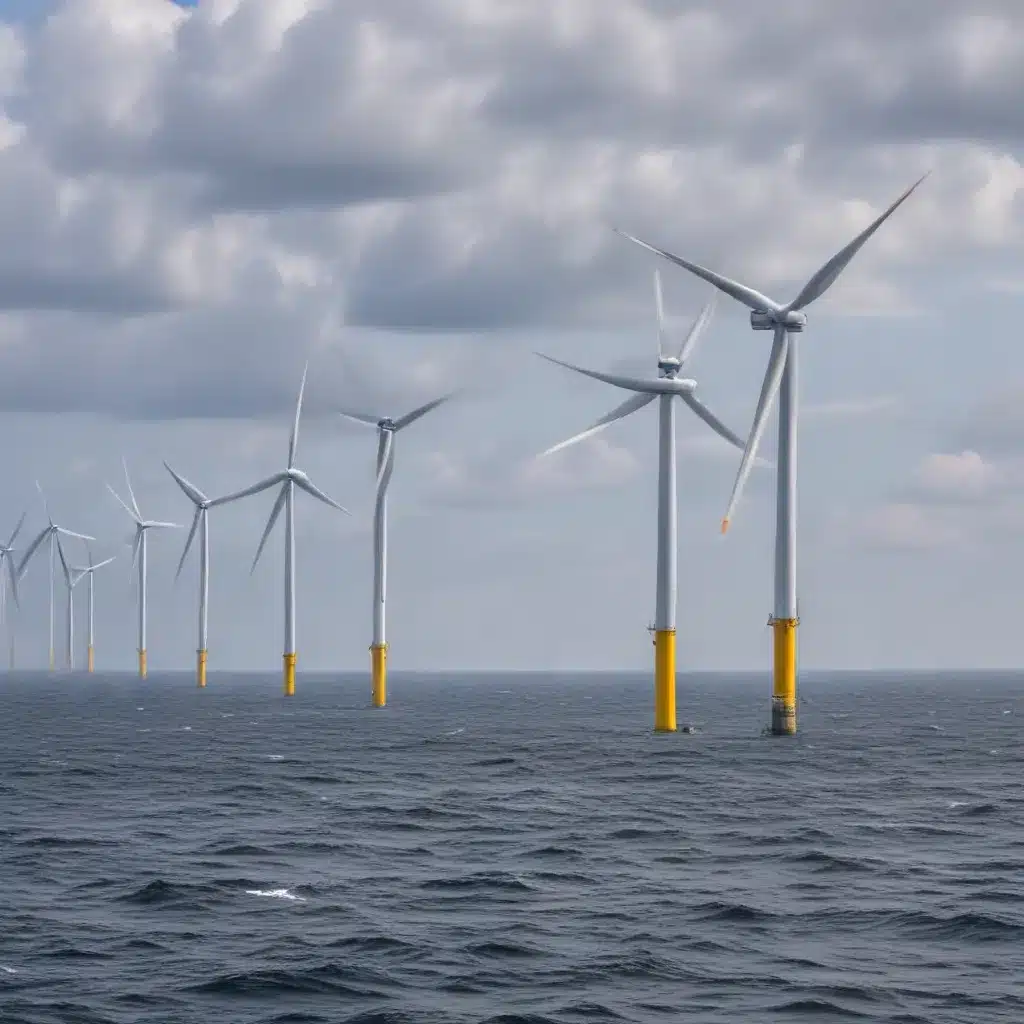
The winds of change are sweeping across Europe’s energy landscape, as the continent accelerates its transition towards a sustainable, carbon-free future. At the forefront of this transformation lies the burgeoning offshore wind industry, which is poised to play a pivotal role in powering Europe’s renewable energy revolution.
Emerging Trends in European Markets
Europe has long been a global leader in offshore wind development, with countries like the United Kingdom, Germany, and Denmark pioneering the industry’s growth. In recent years, this trend has only intensified, as governments across the continent have ramped up their ambitions and commitments to offshore wind.
The past decade has witnessed a remarkable surge in installed offshore wind capacity in Europe, which grew from just 2.9 gigawatts (GW) in 2010 to over 28 GW by the end of 2021. This exponential growth is largely driven by technological advancements, improved project economics, and supportive policy frameworks that have made offshore wind an increasingly attractive and viable clean energy option.
Technological Advancements in Turbine Design
The offshore wind industry has experienced a remarkable transformation in recent years, with turbine technology evolving at a rapid pace. The latest generation of offshore wind turbines boast impressive capacities, reaching up to 15 MW or more, with rotor diameters exceeding 200 meters. These technological breakthroughs have dramatically improved the capacity factor of offshore wind farms, enhancing their overall energy output and economic viability.
Alongside larger, more efficient turbines, the industry has also witnessed significant advancements in foundation design, installation techniques, and grid integration capabilities. These innovations have helped to reduce the levelized cost of energy (LCOE) for offshore wind, making it increasingly competitive with traditional fossil fuel-based power generation.
Regulatory and Policy Frameworks
The European Union (EU) has played a pivotal role in driving the offshore wind sector’s growth through its comprehensive policy frameworks and regulatory support. The EU’s Renewable Energy Directive sets ambitious targets for renewable energy deployment, with a goal of achieving at least 32% of the EU’s energy mix from renewable sources by 2030. This, coupled with the European Green Deal’s commitment to climate neutrality by 2050, has provided a strong impetus for member states to ramp up their offshore wind capacity.
Governments across Europe have responded by implementing a range of supportive policies, including feed-in tariffs, renewable energy auctions, and investment tax credits. These mechanisms have helped to de-risk offshore wind projects and attract significant private investment into the sector.
Challenges and Opportunities
While the offshore wind industry’s growth in Europe has been remarkable, it is not without its challenges. The deployment of offshore wind farms requires significant upfront capital investment, robust grid infrastructure, and careful planning to mitigate potential environmental and social impacts.
Infrastructure Deployment Barriers
The construction of offshore wind farms, which often involve the installation of massive turbines in remote, offshore locations, can pose logistical and technical hurdles. Developing the necessary port facilities, vessels, and specialized installation equipment requires substantial coordination and long-term planning.
Grid Integration and Transmission
Integrating the massive amounts of electricity generated by offshore wind farms into the existing grid can also present a significant challenge. Ensuring grid stability and reliability in the face of intermittent renewable energy sources is crucial, necessitating investments in grid upgrades, energy storage solutions, and smart grid technologies.
Environmental and Social Considerations
The deployment of offshore wind farms must also navigate complex environmental and social considerations. Potential impacts on marine ecosystems, coastal communities, and visual landscapes must be carefully assessed and mitigated through comprehensive impact assessments and stakeholder engagement.
Economic and Societal Impact
The growth of the offshore wind industry in Europe has brought about significant economic and societal benefits, with the potential to drive a just and equitable energy transition.
Job Creation and Workforce Development
The offshore wind sector has emerged as a significant source of employment, with the potential to create thousands of high-quality, skilled jobs in engineering, manufacturing, installation, and operations. As the industry continues to expand, there is a growing need to invest in workforce development and training programs to ensure a steady supply of qualified personnel.
Supply Chain Localization
The offshore wind industry has also spurred the development of robust domestic supply chains, with European manufacturers and service providers emerging as global leaders in the production of turbines, foundations, and other critical components. This localization of the supply chain has helped to bolster regional economies and reduce reliance on imports.
Community Engagement and Acceptance
Fostering strong relationships with local communities is essential for the successful deployment of offshore wind projects. Engagement efforts that prioritize transparency, benefit-sharing, and environmental protection can help to build trust and garner widespread public support for these developments.
Innovative Financing Models
The capital-intensive nature of offshore wind projects has necessitated the development of innovative financing models to attract investment and mitigate risks.
Public-Private Partnerships
Collaboration between the public and private sectors has been crucial in driving the offshore wind industry’s growth. Public-private partnerships (PPPs) have enabled the pooling of resources, knowledge, and risk-sharing, facilitating the deployment of larger-scale offshore wind farms.
Risk Mitigation Strategies
Strategies such as risk-sharing agreements, transmission service agreements, and power purchase agreements (PPAs) have helped to de-risk offshore wind investments and attract a wider range of financial institutions, including institutional investors and pension funds.
Renewable Energy Incentives
Governments across Europe have also implemented a range of incentives and support mechanisms to spur offshore wind development, such as investment tax credits, production tax credits, and renewable energy auctions. These policy tools have been instrumental in driving the industry’s growth and ensuring its long-term viability.
As Europe continues its transition towards a sustainable energy future, the offshore wind industry stands as a shining example of the transformative potential of renewable energy. Through technological advancements, supportive policy frameworks, and innovative financing models, the sector is poised to play a pivotal role in powering Europe’s clean energy transformation and contributing to the continent’s ambitious climate goals.







